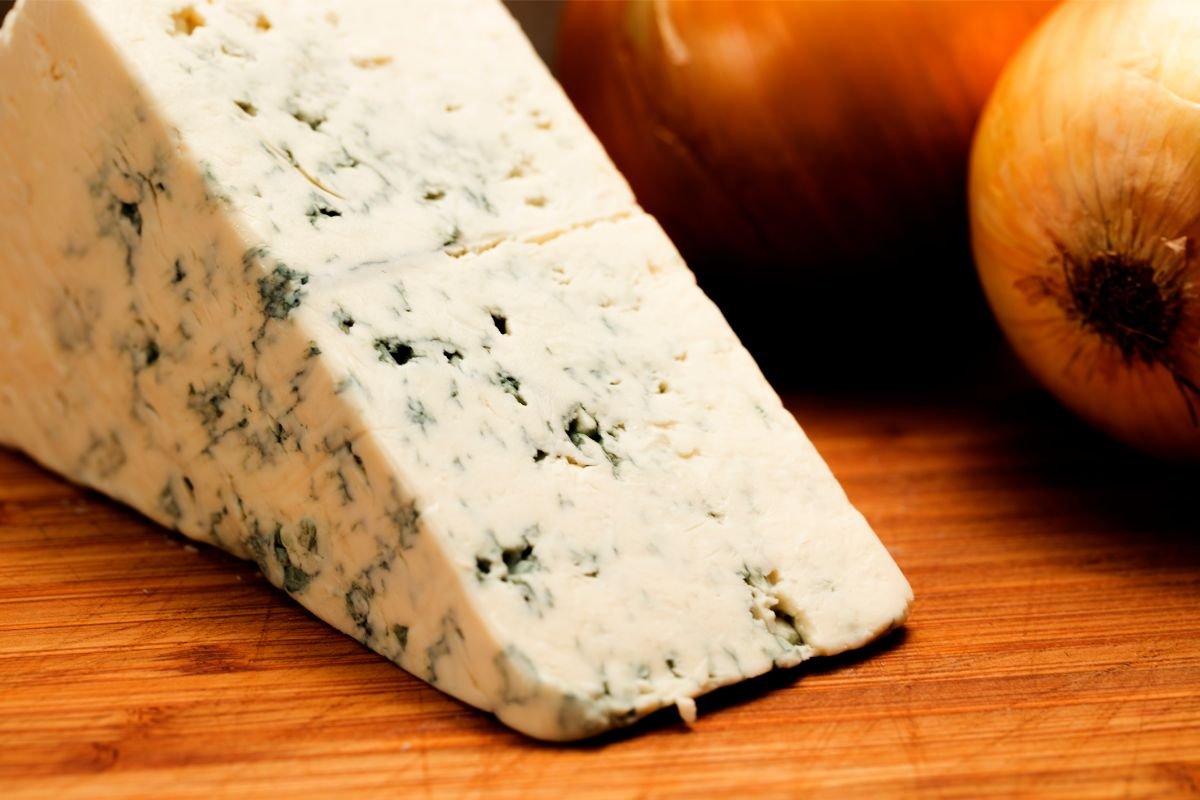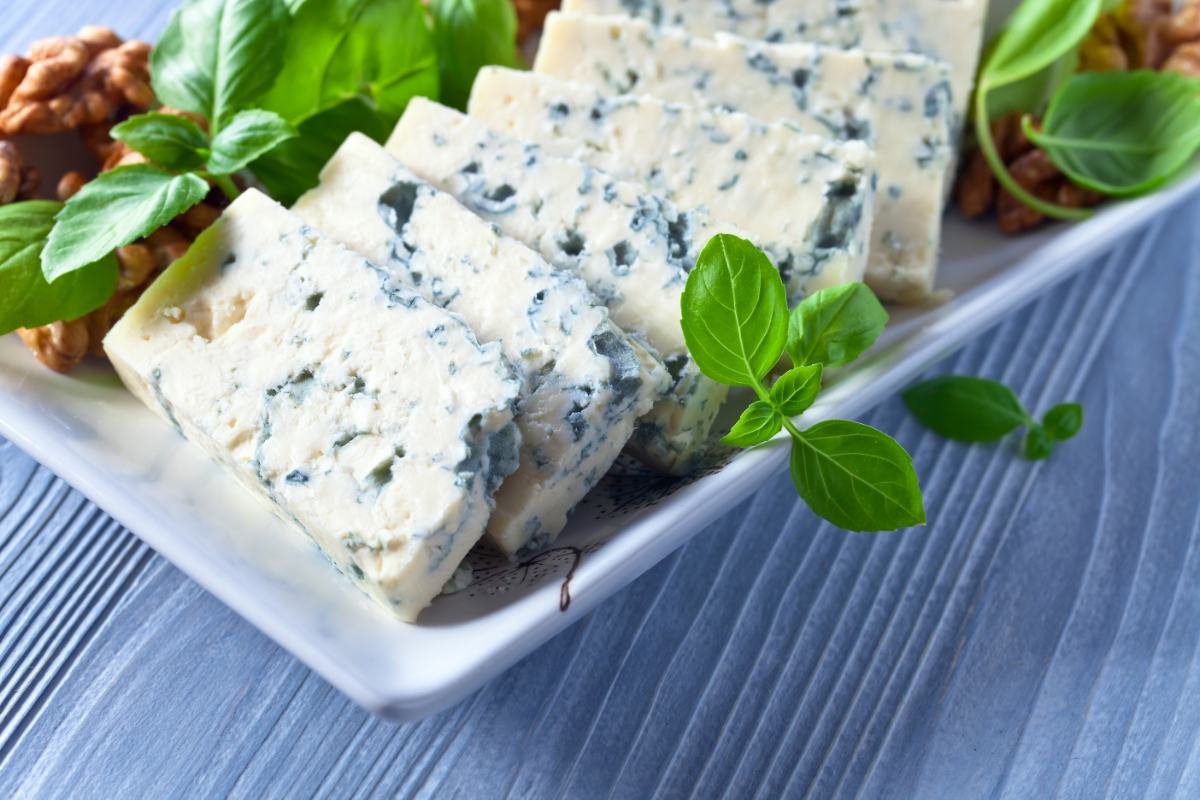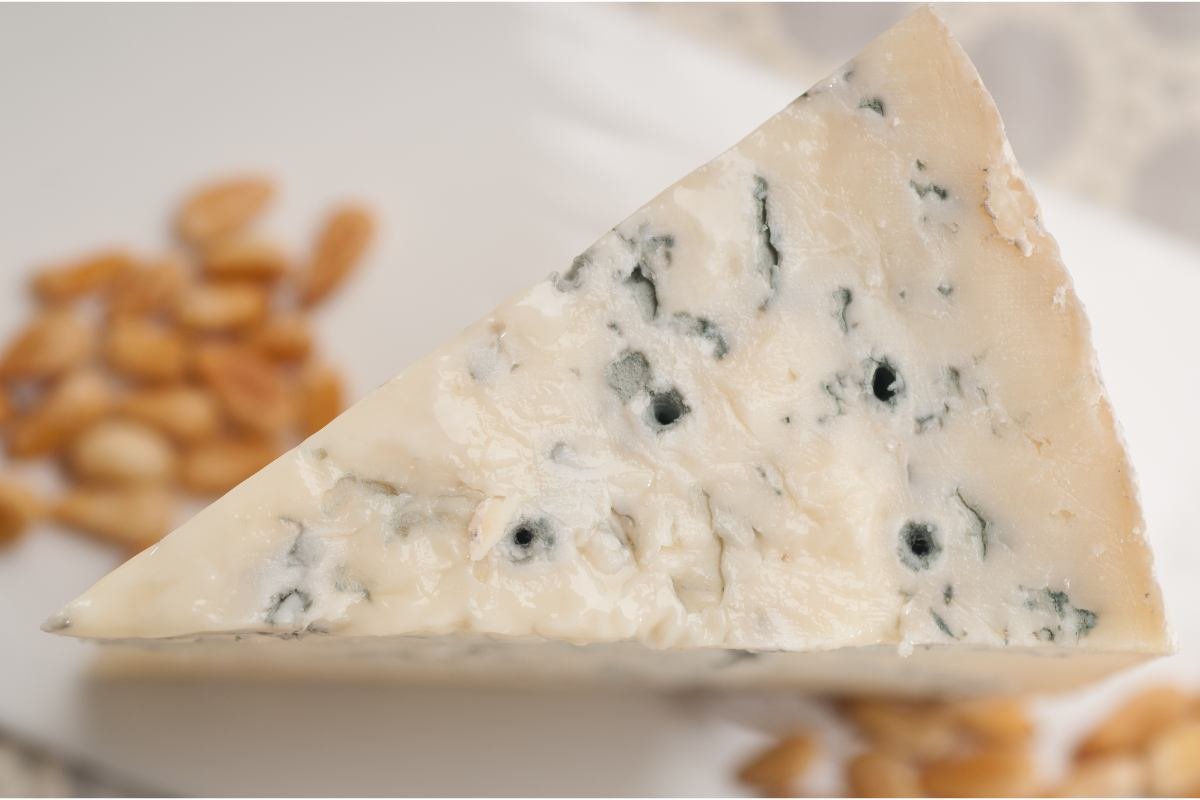Gorgonzola cheese is a testament to the rich culinary heritage of Italy, with a history that intertwines with the culture and traditions of its region. Originating from the town of Gorgonzola, near Milan, this cheese has been a staple in Italian cuisine for centuries. Its unique flavor profile, ranging from mild to sharp, encapsulates the artistry of cheese-making in Italy. This section will delve into the origins of Gorgonzola, highlighting its historical significance and enduring presence in the culinary world.
Types of Gorgonzola

Gorgonzola cheese, with its rich veins of blue-green mold and creamy texture, stands as a pillar of Italian cheese-making tradition. Not all Gorgonzolas are the same, however. This beloved cheese comes in two distinct varieties: Gorgonzola Dolce (Sweet Gorgonzola) and Gorgonzola Piccante (Spicy Gorgonzola). Each type offers a unique taste experience, catering to different palates and culinary uses. Let’s explore these varieties in more detail, uncovering their flavors, uses, and how to best enjoy them.
Gorgonzola Dolce: The Creamy Delight
Gorgonzola Dolce, often referred to as the milder sibling, boasts a soft, almost spreadable texture with a sweet, gentle flavor. Producers craft it with care, ensuring a shorter aging process of about two to three months, which contributes to its creaminess and less pronounced mold flavor. The cheese’s buttery consistency and mild taste make it a favorite among those who prefer a less intense blue cheese experience.
Taste Profile and Uses: Gorgonzola Dolce’s velvety texture and sweet, milky flavors make it a versatile cheese in the kitchen. It melts beautifully, making it perfect for adding a creamy depth to risottos, pastas, and sauces. When spread on a piece of crusty bread or paired with fruits like pears and figs, it creates a delightful contrast of flavors.
Gorgonzola Piccante: The Bold and Aged
In contrast, Gorgonzola Piccante presents a firmer texture and a bolder, more assertive flavor. This variety undergoes a longer aging process, typically over three months, allowing the characteristic blue veins to develop a pronounced piquancy and the cheese to achieve a crumbly yet somewhat creamy consistency. The extended aging imbues Gorgonzola Piccante with its distinctive sharp and spicy taste, appealing to those who crave intensity in their blue cheese.
Taste Profile and Uses: The robust flavor of Gorgonzola Piccante shines in dishes that can stand up to its boldness. It’s an excellent choice for enriching meat dishes, adding complexity to salads, and elevating the flavors of robust pasta sauces. When served with honey, nuts, or preserved fruits, it balances its intensity with sweetness and texture, offering a sophisticated cheese course option.
Comparison and Pairing Suggestions
While both types of Gorgonzola have their unique charm, they share a versatility that makes them stars in the culinary world. Gorgonzola Dolce tends to pair well with lighter, sweeter wines like Moscato and Riesling, which complement its creamy sweetness without overpowering it. On the other hand, Gorgonzola Piccante, with its stronger flavor profile, pairs beautifully with bolder reds like Barolo or Amarone, as well as full-bodied white wines that can match its intensity.
In cooking, the choice between Dolce and Piccante often comes down to personal preference and the desired outcome of the dish. Dolce’s creaminess is perfect for spreading and melting, while Piccante’s firmer texture and stronger flavor make it ideal for grating over dishes or incorporating into recipes where the cheese needs to stand out.
Production Process
The creation of Gorgonzola cheese is an art that marries tradition with meticulous craftsmanship. This process transforms simple ingredients into one of the world’s most renowned blue cheeses. The journey from milk to the final aged product involves several detailed steps, each crucial for achieving Gorgonzola’s characteristic flavor and texture. Let’s dive into the production process, exploring how cheese makers craft both Gorgonzola Dolce and Piccante.
Milk Sourcing and Initial Processing
Gorgonzola begins its life in the lush pastures of northern Italy, where the milk is sourced from local cows. This high-quality, raw or pasteurized milk forms the foundation of the cheese. Cheese makers carefully select the milk based on its fat content and freshness, ensuring it meets the stringent standards for Gorgonzola production.
The Process: The milk is gently warmed in large vats, preparing it for the addition of specific cultures that will start the fermentation process. These cultures are crucial for developing the initial flavor profile of the cheese. Rennet, a natural enzyme, is then added to coagulate the milk, turning it into a soft curd.
Culturing and Curdling
After coagulation, the curd is meticulously cut into smaller pieces, facilitating whey separation and curd firming. This step is critical for achieving the desired moisture content and texture in the final cheese. Cheese makers then introduce Penicillium glaucum, the mold responsible for Gorgonzola’s distinctive blue veins and flavor.
The Technique: Workers stir the curds and whey mixture, ensuring even distribution of the mold throughout. The careful management of curd size and stirring technique influences the cheese’s final texture and mold distribution.
Aging Process and Environment
Once the curds are prepared, they are transferred into molds to shape the cheese. The young cheese is then salted and left to age. The aging process is where Gorgonzola truly develops its character. Gorgonzola Dolce ages for a shorter period, about two to three months, resulting in a softer, milder cheese. Gorgonzola Piccante, in contrast, ages for over three months, often up to a year, developing a firmer texture and more intense flavor.
The Environment: The cheeses are stored in temperature and humidity-controlled environments, ideal for fostering the growth of the Penicillium mold. During aging, the cheeses are regularly turned and sometimes pierced. Piercing allows air into the cheese, feeding the mold and encouraging the development of the blue veins that are synonymous with blue cheese.
Quality Control and Certification
Throughout the production and aging process, Gorgonzola undergoes rigorous quality control to ensure it meets the Protected Geographical Indication (PGI) standards. This certification guarantees that only cheese produced in a specific region using traditional methods can be called Gorgonzola.
The Standards: Experts inspect the cheese for texture, flavor, and appearance, ensuring each wheel of Gorgonzola meets the high standards expected of this iconic cheese. This careful oversight maintains the integrity and reputation of Gorgonzola on the global stage.
Nutritional Profile
Gorgonzola cheese, beyond its rich flavors and versatile culinary uses, also offers a variety of nutritional benefits. This section highlights the key nutrients found in Gorgonzola, along with its health benefits and dietary considerations. Understanding Gorgonzola’s nutritional profile can help consumers make informed choices about incorporating this cheese into their diets.
Key Nutrients and Health Benefits
Gorgonzola is a nutrient-dense cheese, providing a significant source of proteins, fats, and essential vitamins and minerals. One of the standout nutrients in Gorgonzola is calcium, crucial for bone health and density. Additionally, this cheese is rich in vitamin A, contributing to immune function, vision health, and skin integrity.
Proteins and Fats: Gorgonzola offers high-quality proteins, essential for muscle repair and growth. The fats in Gorgonzola, although high in calories, contain conjugated linoleic acid (CLA), which has been linked to reduced body fat and improved heart health.
Dietary Considerations and Potential Health Risks
While Gorgonzola can be a healthy addition to many diets, it’s important to consume it in moderation due to its high saturated fat and sodium content. Individuals with lactose intolerance or dairy sensitivities should also approach Gorgonzola with caution, as it contains lactose, albeit in lower amounts compared to fresher cheeses.
Balanced Consumption: Integrating Gorgonzola into a balanced diet can amplify its health benefits while minimizing potential risks. Pairing Gorgonzola with fruits, nuts, and whole grains can enhance its nutritional value, creating satisfying and healthful meals or snacks.
Culinary Uses

Gorgonzola cheese, with its distinctive flavors and textures, serves as a versatile ingredient that elevates a wide range of dishes. Whether it’s the creamy sweetness of Gorgonzola Dolce or the bold spiciness of Gorgonzola Piccante, this cheese adds depth and complexity to culinary creations. Let’s explore the myriad ways Gorgonzola can transform traditional Italian dishes, modern culinary applications, and provide tips for cooking and pairing.
Traditional Italian Dishes with Gorgonzola
Gorgonzola finds its roots deep in Italian cuisine, gracing everything from simple appetizers to hearty main courses. Its ability to blend with a variety of ingredients makes it a favorite among chefs and home cooks alike.
Polenta and Gorgonzola: A classic combination, where the creaminess of Gorgonzola Dolce perfectly complements the rustic texture of polenta, offering a comforting dish that’s both simple and satisfying.
Pasta with Gorgonzola Sauce: Whether it’s a rich and creamy sauce for gnocchi or a bold and spicy accompaniment for penne, Gorgonzola transforms pasta dishes into decadent experiences. The key is to balance the cheese’s intensity with the right pasta and additional ingredients like walnuts or spinach.
Risotto al Gorgonzola: Incorporating Gorgonzola into risotto introduces a creamy texture and a depth of flavor that’s unmatched. The cheese’s richness complements the risotto’s natural creaminess, making for a luxurious dish.
Modern Culinary Applications
Beyond traditional uses, Gorgonzola’s unique flavor profiles inspire contemporary chefs to innovate and experiment, leading to exciting fusion dishes and new flavor combinations.
Gorgonzola and Pear Pizza: A modern twist on pizza, where slices of sweet pear counterbalance the tangy sharpness of Gorgonzola, creating a gourmet experience that challenges the palate in the best way.
Burger (Gorgonzola): Elevate a classic burger by adding crumbled Gorgonzola Piccante, introducing a new level of flavor complexity that enhances the meat’s savoriness.
Gorgonzola Ice Cream: For the adventurous, incorporating Gorgonzola into ice cream presents a bold dessert option that’s surprisingly balanced, with the cheese’s tanginess complementing the sweet cream base.
Tips for Cooking and Pairing
Working with Gorgonzola in the kitchen is both exciting and rewarding, but there are some tips to keep in mind to make the most out of this flavorful cheese.
Balancing Flavors: Gorgonzola’s strong flavor can dominate a dish if not balanced correctly. Pair it with ingredients that can stand up to or complement its intensity, such as sweet fruits, nutty flavors, or bold spices.
Melting Matters: When melting Gorgonzola, especially the Dolce variety, do so over low heat to avoid separating the fats, which can lead to a grainy texture. A gentle melt preserves the cheese’s creamy consistency.
Wine Pairings: The right wine can enhance the experience of eating Gorgonzola. Light and sweet wines pair well with Gorgonzola Dolce, cutting through its creaminess. For Gorgonzola Piccante, choose a robust red wine that matches its bold flavors.
Gorgonzola in Culture and Society
Gorgonzola cheese, with its rich history and distinctive flavor, holds a special place in culture and society, transcending its culinary roots to become a symbol of Italian heritage and gastronomy. This section delves into how Gorgonzola has been represented in media and literature and highlights the cultural events that celebrate this iconic cheese.
Representation in Media and Literature
Gorgonzola frequently appears in media and literature, often used as a symbol of sophistication, complexity, and the rich tapestry of Italian life. Authors and screenwriters incorporate it into narratives to evoke a sense of place or to add depth to their depiction of Italian dining and lifestyle. Whether mentioned in passing in a novel set in Milan or featured as a key ingredient in a beloved recipe within a film, Gorgonzola serves as a culinary signpost for Italy’s rich culture and traditions.
Cultural Symbolism: Beyond its gustatory delights, Gorgonzola represents the craftsmanship and regional pride of the Italian cheese-making tradition. Its portrayal in media often emphasizes the value of artisanal practices and the importance of preserving culinary heritage.
Gorgonzola Festivals and Events
In Italy and around the world, Gorgonzola is celebrated through various festivals and events that honor its legacy and influence. These gatherings unite enthusiasts, producers, and culinary professionals in a shared appreciation of the cheese’s unique qualities.
Gorgonzola Celebrations: Annual festivals in regions known for producing Gorgonzola showcase the cheese in all its forms. Attendees enjoy tastings, cooking demonstrations, and discussions about its production and cultural significance. These events not only highlight the cheese’s versatility and appeal but also promote the regions’ cultural identity and culinary excellence.
Purchasing and Storage Tips
Selecting and storing Gorgonzola cheese properly ensures that you enjoy its full range of flavors and textures at their peak. Whether you’re a connoisseur or a casual fan, understanding how to choose the best Gorgonzola and keep it fresh is key to maximizing your culinary experience. Here, we provide essential tips for purchasing and preserving this exquisite cheese.
How to Select the Best Gorgonzola
When shopping for Gorgonzola, look for cheese that appears fresh and has a vibrant color. The presence of blue-green veins should be prominent, but not overwhelming, indicating a well-balanced flavor profile.
Check for Freshness: Inspect the packaging for any signs of excessive moisture or damage, which could affect the cheese’s quality. If possible, ask to taste a sample to ensure it meets your expectations in flavor and texture.
Understand the Varieties: Remember the differences between Gorgonzola Dolce and Piccante. Choose Dolce for a milder, creamier cheese and Piccante for a bolder, more robust flavor.
Proper Storage Methods
Once you’ve selected your Gorgonzola, proper storage is crucial for maintaining its quality. Cheese, being a living product, continues to mature, and the right conditions can extend its life and enhance its flavors.
Refrigerate Correctly: Store Gorgonzola in the refrigerator, wrapped in parchment paper or wax paper, which allows the cheese to breathe without drying out. Avoid plastic wrap, which can trap moisture and lead to mold growth.
Serve at Room Temperature: To fully appreciate Gorgonzola’s depth of flavor, let it come to room temperature before serving. This enhances its texture and makes the taste more pronounced.
Conclusion
Exploring the fascinating world of Gorgonzola has taken us through its storied past, diverse varieties, meticulous production, and nutritional insights. We’ve also delved into its culinary versatility and cultural impact, rounding off with practical advice on selection and storage. Gorgonzola, deeply rooted in Italian tradition, brings a wealth of flavors to both classic and innovative dishes. Whether it’s the creamy whispers of Gorgonzola Dolce or the bold echoes of Gorgonzola Piccante that entice you, incorporating this cheese into your meals promises a transformative experience.
Eager to weave Gorgonzola into your cooking? Our website, RecipesZap.com, offers a treasure trove of recipes that highlight the unique characteristics of this exquisite cheese. From time-honored Italian dishes to inventive culinary creations, Gorgonzola’s versatility shines through. Discover new ways to enjoy this cherished ingredient by visiting RecipesZap.com, where culinary inspiration awaits.
In wrapping up our journey into Gorgonzola’s rich tapestry, let’s remember that this cheese represents more than a mere ingredient. It embodies centuries of cheesemaking artistry, standing as a beacon of cultural heritage and a wellspring of gastronomic creativity. Embrace the delightful complexity of Gorgonzola in your next culinary adventure, and join the myriad of chefs and enthusiasts who have celebrated its flavors. Here’s to exciting discoveries in your kitchen and unforgettable dining experiences. Buon appetito!

